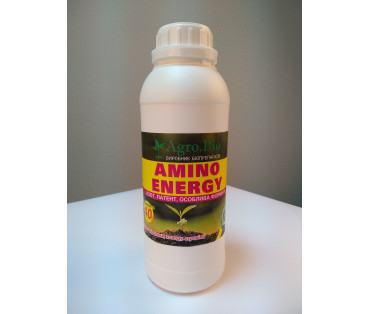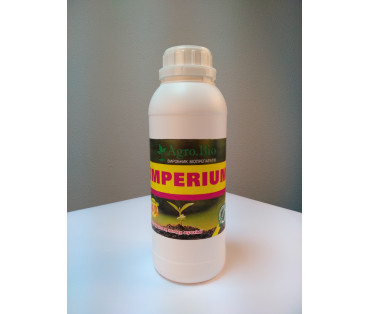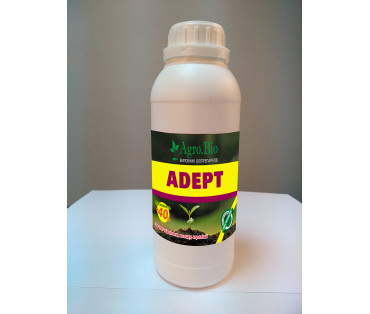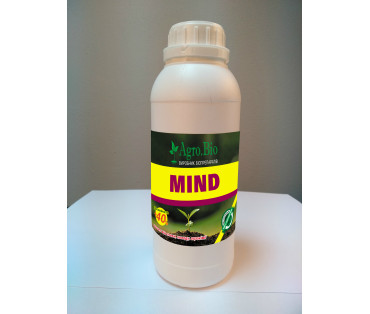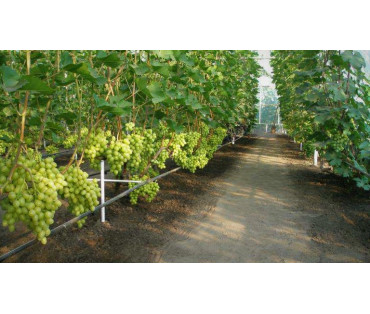Effect of Humic and Fulvic Acids on Phosphorus Uptake in Plants Depending on Environmental Temperature
The stimulating effect of humic and fulvic acids on plants has been noted by various scientists, including specialists from the mineral fertilizer manufacturer Agro.Bio, but the nature of this effect is explained differently by researchers.
Theories of Humic Acids' Action
Some suggest that the stimulating effect of humic and fulvic acids lies in their hormonal properties. Others believe that the stimulating effect is associated with increased protoplasm permeability, which enhances the uptake of nitrogen, phosphorus, potassium, and other elements into the plant. Based on previous work, our scientists have come to a similar conclusion.
Studies note that small doses of humic and fulvic acids promote increased absorption of mineral elements by plants. It is also indicated that under the influence of these acids, the content of nitrogen and potassium in the plant increases, and the activity of some enzymes is enhanced.
Mechanism of Acids' Action
Humic and fulvic acids enhance the uptake of mineral elements, especially P₂O₅, into plants. Agro.Bio specialists believe that humic and fulvic acids, being in an ion-dispersed state, enter the plant, enhance the phenolase oxidative system, and thus activate oxidative metabolism. The enhancement of oxidative metabolism leads to increased vitality of the entire plant organism, resulting in better utilization of mineral nutrients by the plant.
Research Methodology
Adhering to the views of L.A. Khristeva on the nature of the stimulating action of humic and fulvic acids, we hypothesized that the effect of acid application would depend on environmental temperature, as the work of the cell's enzymatic apparatus is closely related to temperature factors.
To test this hypothesis, we conducted special laboratory experiments using phosphorus (P³²) to investigate the effect of temperature on phosphorus uptake in plants. These experiments were initially conducted with Scots pine and then with barley.
Experimental Results
Table 1. Effect of Humic and Fulvic Acids on Phosphorus Uptake and Distribution in Pine Organs at Different Environmental Temperatures
| Experiment Variants | Impulses per minute per 100 mg of dry matter | Total Activity | ||
|---|---|---|---|---|
| Root | Stem | Needles | ||
| Experiment 1. (Temperature 9-10°C) 04/07/2016 |
||||
| Phosphate buffer + P³² | 525 | 253 | 482 | 1260 |
| Same + humic acid + fulvic acid | 452 | 170 | 267 | 889 |
| Experiment 2. (Temperature 14-15°C) 04/26/2016 |
||||
| Phosphate buffer + P³² | 2390 | 1995 | 2062 | 6447 |
| Same + humic acid + fulvic acid | 5030 | 3060 | 2945 | 11035 |
| Water + P³² | 13100 | 4920 | 6800 | 24820 |
| Humic acid + P³² | 14365 | 2190 | 2050 | 18605 |
| Experiment 3. (Temperature 18-20°C) 04/26/2016 |
||||
| Water + P³² | 13736 | 2002 | 1176 | 16914 |
| Humic acid and fulvic acid + P³² | 18422 | 2269 | 1898 | 22589 |
Data from Table 1 show that the stimulating effect of fulvic and humic acids on P³² uptake in plants, especially in their above-ground parts, in distilled water appears at environmental temperatures no lower than 18-20°C. The phosphate buffer somewhat reduces the negative effect of lower temperatures on the stimulating action of acids and P³² uptake into plant organs, causing it to appear already at 14-15°C.
The lower phosphorus uptake in pine organs in the phosphate buffer variants, in our opinion, is explained by the fact that plants in these variants utilized phosphorus from both the added source and the buffer mixture.
Table 2. Effect of Fulvic and Humic Acids on P³² Uptake in Barley Seedlings at Different Environmental Temperatures
| Experiment Variants | Temp. +11°C | Temp. +8°C | Temp. +22°C | Temp. +18°C |
|---|---|---|---|---|
| Water + P³² | 1330 | 837 | 423 | 484 |
| Humic acid + fulvic acid + P³² | 1226 | 615 | 276 | 334 |
As can be seen from the table, the results of experiments with barley fully confirm the conclusion about the stimulating effect of acids on P³² uptake in plants at 18-20°C. At lower temperatures (below 15°C), these acids not only do not stimulate P³² uptake in plants but even reduce it.
Thus, the results of these experiments indicate the dependence of the stimulating effect exerted by humic and fulvic acids on plants on the temperature factor.
This position is also confirmed by the results of a production experiment with different planting dates for pine (September 15, October 10, and November 3), in which humic acids were used to improve the survival rate of two-year-old Scots pine seedlings.
Conclusions:
- The stimulating effect of humic acid and fulvic acid on phosphorus uptake in plants depends on environmental temperature. It appears at 18-20°C and above.
- At environmental temperatures below 14-15°C, humic acid, like fulvic acid, not only does not promote phosphorus uptake in plants but even reduces it.
Related Products
Amino Energy «Agro.Bio»
Amino Energy "Agro.Bio" is the best anti-stress and plant growth regulator. Stress is always inhibition of plant growth. This is their way of surviving in adverse conditions. Drought, frost, sudden t..
$13.00
Imperium «Agro.Bio»
Imperium "Agrobio" preparation contains two unique groups of natural substances, the mutual action of which causes a powerful biostimulating effect. It is used to improve the kilkisnicht quality indic..
$17.00
Adept «Agro.Bio»
Product Adept "Agro.Bio" is an innovative solution in agriculture to support the growth and development of plants. A biostimulant based on ginseng root micromycete fungi provides a wide range of effec..
$13.00
Mind Extra «Agro.Bio»
Complex stimulator Mind Extra "Agro.Bio" - effective protection and maximum stimulating support at all stages of plant growth. Humate, potassium, lutidine and succinic acid are the main components of ..
$12.00
Related Articles
Introduction to Humates
Potassic humate has amazing properties due to the fundamental role of humic acids in the biosphere of the planet. Their application allows to increase ecological cleanness, nutritional and taste quali..
Boron (B) is a medium-active trace mineral not included into the group of metals, which is especially important in plant nutrition and propagation
Boron (B)is a medium-active trace mineral not included into the group of metals, which is especially important in plant nutrition and propagation, after zinc, none of the metabolic processes passes wi..
Nitrogen (N) increases yields and is absorbed in the form of ammonia or nitric acid
Nitrogen (N) is one of the most important major nutrient element for the plant, which increases yields and is absorbed in the form of ammonia or nitric acid (only legumes have the ability to absorb at..
Influence of Totem Agro.Bio on the development of grape seedlings
Agro.Bio pays great attention to the further development of viticulture. To successfully solve the problems of developing viticulture, it is of great importance to increase the yield of first-class..

